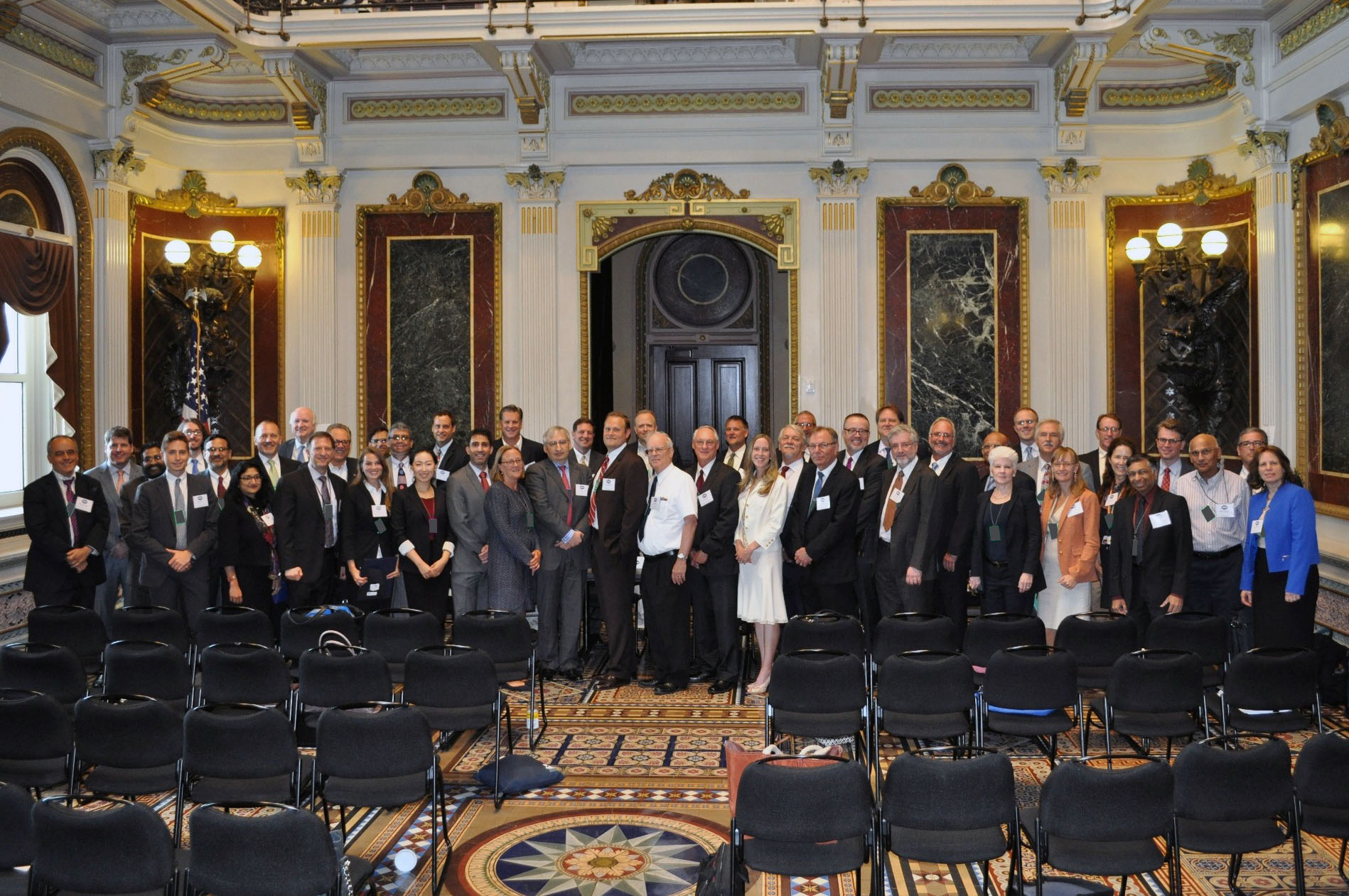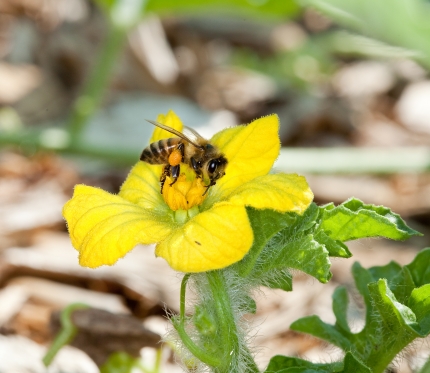Office of Science and Technology Policy Blog
A Note on Genome Editing
Posted by on May 26, 2015 at 10:40 AM EDTLast week, the National Academy of Sciences (NAS) and its National Academy of Medicine (NAM) announced that they will convene an international meeting this fall at which researchers, ethicists, and other experts will discuss the implications of human germline gene-editing technologies in both research and clinical applications.
The White House applauds NAS and NAM for convening this dialogue and fully supports a robust review of the ethical issues associated with using gene-editing technology to alter the human germline. The Administration believes that altering the human germline for clinical purposes is a line that should not be crossed at this time.
Learn more aboutNational Museum and Library Medal Winners Inspire “Makers” Across America
Posted by on May 22, 2015 at 12:37 PM EDTEarlier this week, First Lady Michelle Obama presented the 2015 National Medal for Museum and Library Service to ten museums and libraries that are extraordinary agents of change in their communities. The medal, an award of the Institute of Museum and Library Services, recognizes the many ways these community institutions enhance civic engagement, promote economic vitality, and connect visitors to 21st-century teaching and learning. The Institute of Museum and Library Services, a Federal agency, is the primary source of Federal support for the nation’s libraries and museums.
Libraries and museums have long been centers for self-directed and participatory lifelong teaching and learning. Today, this often includes providing visitors with tools, technologies, and spaces to make and innovate, and to explore the diverse applications of science, technology, engineering, and mathematics (STEM).
Learn more about , Education, TechnologyWhat's Next for the Microbiome?
Posted by on May 21, 2015 at 2:15 PM EDTAdvances in gene-sequencing technology have expanded our knowledge of microorganisms, revealing new species in every environment from the upper atmosphere — an extreme environment not before known to harbor life — to the human lung, formerly thought to be sterile. Vast networks of microbial communities are found frequently in places as familiar as the human gut and the soil beneath our feet. These communities contribute to essential life processes, sometimes in unanticipated ways. For example, bacteria have been shown to clean up waterways after oil spills, help people digest foods such as seaweed, and contribute to global nitrogen and carbon cycling.
Knowing these communities exist is just the first step — now researchers are applying this knowledge to benefit human health and the planet. Addressing fundamental questions common across the study of communities of microorganisms, or “microbiomes,” can help propel the field forward toward practical applications in areas as diverse as environmental remediation, food production and nutrition, and medical research.
Learn more aboutNew Initiatives to Accelerate the Commercialization of Nanotechnology
Posted by on May 20, 2015 at 5:42 PM EDTToday, May 20, the National Economic Council and the Office of Science and Technology Policy held a forum at the White House to discuss opportunities to accelerate the commercialization of nanotechnology.

Participants in the White House Forum on Small Business Challenges to Commercializing Nanotechnology. (Photo credit: Lloyd Whitman)
Over the last fifteen years, the Federal government has invested over $20 billion in nanotechnology R&D as part of the National Nanotechnology Initiative (NNI), working towards breakthroughs such as smart anticancer therapeutics that will destroy tumors while leaving healthy cells untouched, and lighter, thinner body armor that could save the lives of America’s soldiers.
A recent review of the NNI by the President’s Council of Advisors on Science and Technology (PCAST) concluded that:
“…the nanotechnology field is at a critical transition point and has entered its second era, which we call NNI 2.0. This next technological generation will see the evolution from nanoscale components to interdisciplinary nano‐systems and the movement from a foundational research‐based initiative to one that also provides the necessary focus to ensure rapid commercialization of nanotechnology.”
In recognition of the importance of nanotechnology R&D, representatives from companies, government agencies, colleges and universities, and non-profits are announcing a series of new and expanded public and private initiatives that complement the Administration’s efforts to accelerate the commercialization of nanotechnology and expand the nanotechnology workforce:
Learn more about TechnologyYou Had Me At Hello: Brainteaser Solution
Posted by on May 20, 2015 at 5:01 PM EDTThanks to everyone who emailed and tweeted about my “Hello, World” blog post and brainteaser! Following in the footsteps of my fellow Deputy CTO DJ Patil, I’m bringing you the brainteaser solution with a little “back-of-the-napkin” math:

Too easy for you? Let’s kick it up a notch.
Learn more aboutAnnouncing New Steps to Promote Pollinator Health
Posted by on May 19, 2015 at 9:00 AM EDTPollinators are critical to the Nation’s economy, food security, and environmental health. Honey bee pollination alone adds more than $15 billion in value to agricultural crops each year, and helps ensure that our diets include ample fruits, nuts, and vegetables. This tremendously valuable service is provided to society by honey bees, native bees and other insect pollinators, birds, and bats.

A honey bee, with pollen attached to its hind leg, pollinating a watermelon flower. (Photo by Stephen Ausmus/USDA)
But pollinators are struggling. Last year, beekeepers reported losing about 40% of honey bee colonies, threatening the viability of their livelihoods and the essential pollination services their bees provide to agriculture. Monarch butterflies, too, are in jeopardy. The number of overwintering Monarchs in Mexico’s forests has declined by 90% or more over the past two decades, placing the iconic annual North American Monarch migration at risk.
That’s why last June, President Obama issued a Presidential Memorandum directing an interagency Task Force to create a Strategy to Promote the Health of Honey Bees and Other Pollinators. Today, under the leadership of the U.S. Environmental Protection Agency (EPA) and U.S. Department of Agriculture (USDA), the Task Force is releasing its Strategy, with three overarching goals:
- Reduce honey bee colony losses to economically sustainable levels;
- Increase monarch butterfly numbers to protect the annual migration; and
- Restore or enhance millions of acres of land for pollinators through combined public and private action.
The Strategy released today and its accompanying science-based Pollinator Research Action Plan outline needs and priority actions to better understand pollinator losses and improve pollinator health. These actions will be supported by coordination of existing Federal research efforts and accompanied by a request to Congress for additional resources to respond to the pollinator losses that are being experienced.
Increasing the quantity and quality of habitat for pollinators is a major part of this effort—with actions ranging from the construction of pollinator gardens at Federal buildings to the restoration of millions of acres of Federally managed lands and similar actions on private lands. To support these habitat-focused efforts, USDA and the Department of Interior are today issuing a set of Pollinator-Friendly Best Management Practices for Federal Lands, providing practical guidance for planners and managers with land stewardship responsibilities.
The President has emphasized the need for an “all hands on deck” approach to promoting pollinator health, including engagement of citizens and communities and the forging of public-private partnerships. To foster collaboration, the interagency Pollinator Health Task Force will work toward developing a Partnership Action Plan that guides coordination with the many state, local, industry, and citizen groups with interests in and capacities to help tackle the challenge facing pollinators.
Learn more about Energy and Environment
- &lsaquo previous
- …
- 4
- 5
- 6
- 7
- 8
- 9
- 10
- 11
- 12
- …
- next &rsaquo
White House Blogs
- The White House Blog
- Middle Class Task Force
- Council of Economic Advisers
- Council on Environmental Quality
- Council on Women and Girls
- Office of Intergovernmental Affairs
- Office of Management and Budget
- Office of Public Engagement
- Office of Science & Tech Policy
- Office of Urban Affairs
- Open Government
- Faith and Neighborhood Partnerships
- Social Innovation and Civic Participation
- US Trade Representative
- Office National Drug Control Policy
categories
- AIDS Policy
- Alaska
- Blueprint for an America Built to Last
- Budget
- Civil Rights
- Defense
- Disabilities
- Economy
- Education
- Energy and Environment
- Equal Pay
- Ethics
- Faith Based
- Fiscal Responsibility
- Foreign Policy
- Grab Bag
- Health Care
- Homeland Security
- Immigration
- Innovation Fellows
- Inside the White House
- Middle Class Security
- Open Government
- Poverty
- Rural
- Seniors and Social Security
- Service
- Social Innovation
- State of the Union
- Taxes
- Technology
- Urban Policy
- Veterans
- Violence Prevention
- White House Internships
- Women
- Working Families
- Additional Issues


